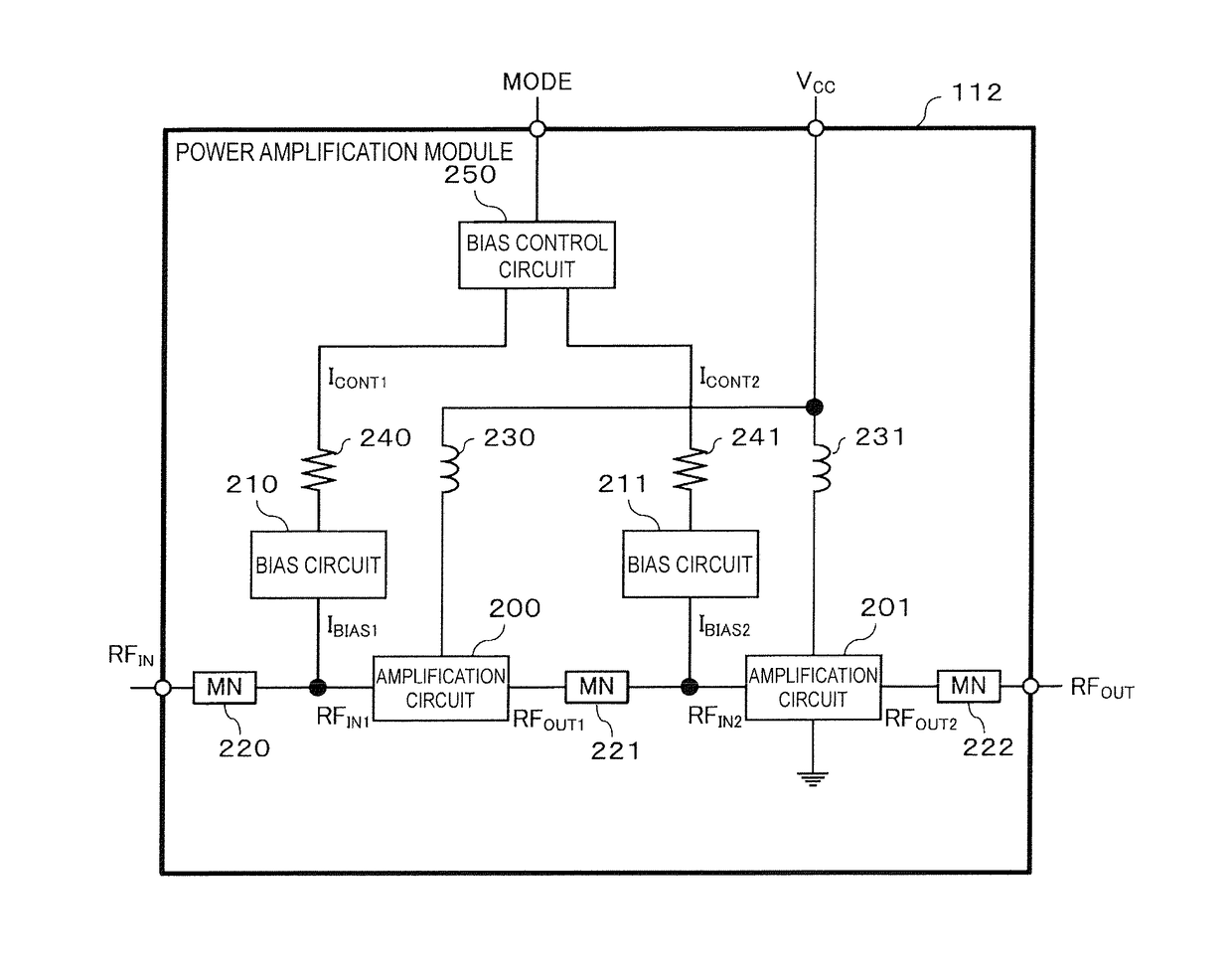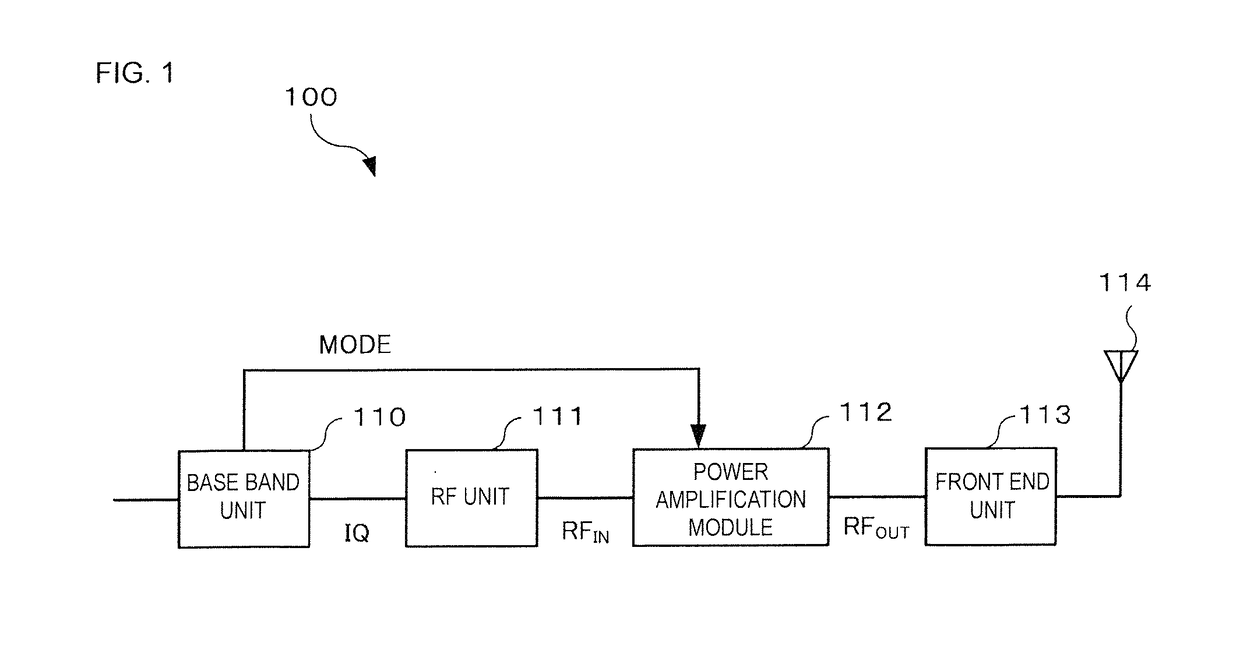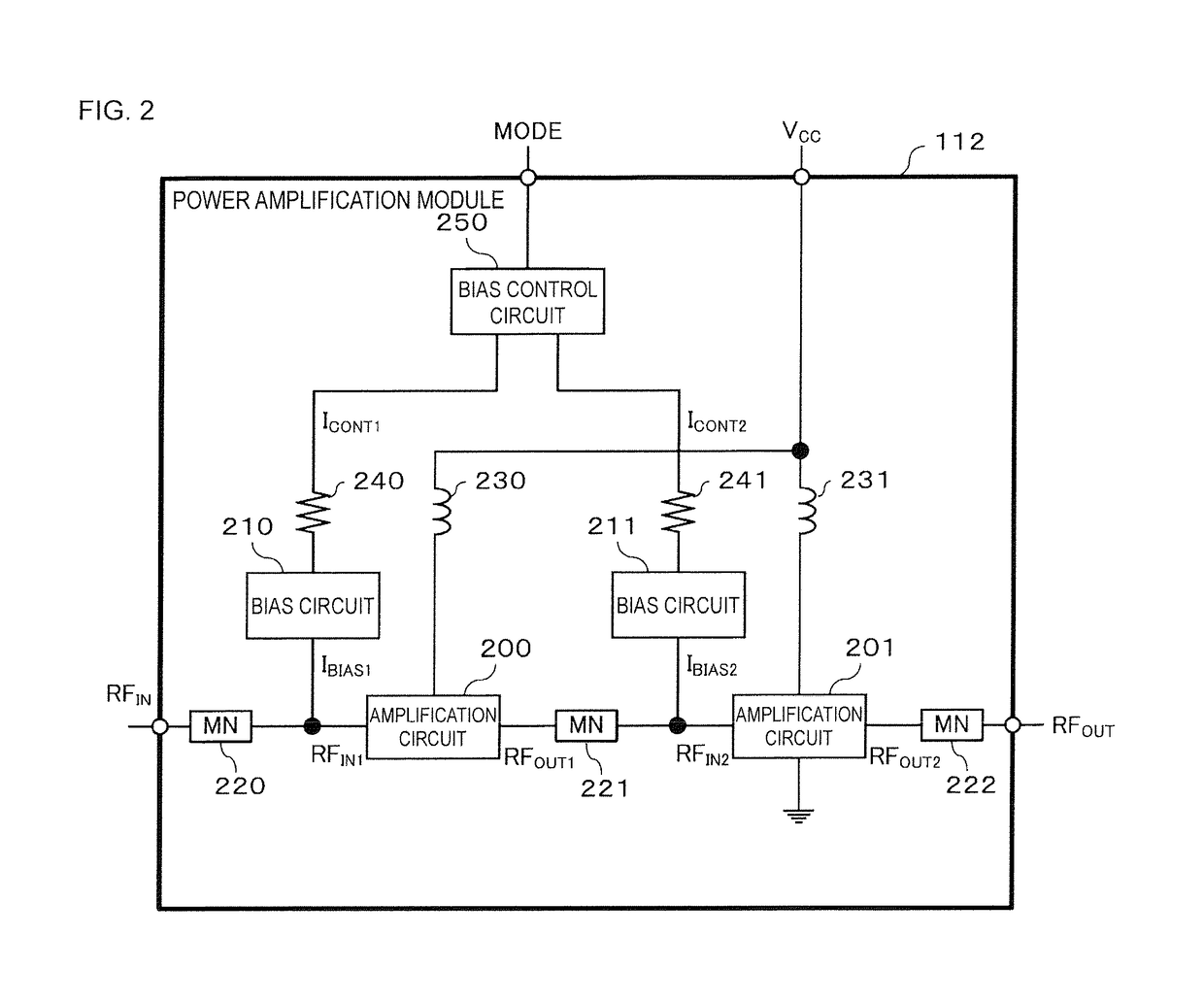Power amplification module
a technology of power amplification and power amplifier, which is applied in the direction of amplifier types, amplifiers with semiconductor devices/discharge tubes, amplifiers, etc., can solve the problems of increasing current consumption, degrading and increasing current consumption, so as to suppress the degradation of the linearity of gain in the power amplification module
- Summary
- Abstract
- Description
- Claims
- Application Information
AI Technical Summary
Benefits of technology
Problems solved by technology
Method used
Image
Examples
Embodiment Construction
[0023]Hereafter, an embodiment of the present disclosure will be described while referring to the drawings. FIG. 1 illustrates an example configuration of a transmission unit that includes a power amplification module according to an embodiment of the present disclosure. A transmission unit 100 is for example used in a mobile communication device such as a cellular phone in order to transmit various signals such as speech and data to a base station. Although such a mobile communication device would also be equipped with a reception unit for receiving signals from the base station, the description of such a reception unit is omitted here.
[0024]As illustrated in FIG. 1, the transmission unit 100 includes a base band unit 110, an RF unit 111, a power amplification module 112, a front end unit 113 and an antenna 114.
[0025]The base band unit 110 modulates an input signal such as speech or data on the basis of a modulation scheme such as HSUPA or LTE and outputs a modulated signal. In thi...
PUM
 Login to View More
Login to View More Abstract
Description
Claims
Application Information
 Login to View More
Login to View More - R&D
- Intellectual Property
- Life Sciences
- Materials
- Tech Scout
- Unparalleled Data Quality
- Higher Quality Content
- 60% Fewer Hallucinations
Browse by: Latest US Patents, China's latest patents, Technical Efficacy Thesaurus, Application Domain, Technology Topic, Popular Technical Reports.
© 2025 PatSnap. All rights reserved.Legal|Privacy policy|Modern Slavery Act Transparency Statement|Sitemap|About US| Contact US: help@patsnap.com



